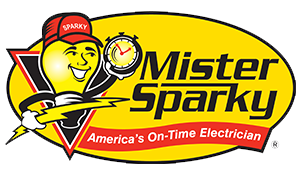Understanding At-Home Electric Vehicle Charging: Level 1 vs. Level 2
Buying a new electric vehicle (EV) is a great way to reduce your carbon footprint and lower your long-term transportation costs. Today’s national charging infrastructure offers broader access for drivers and improved charging speeds.
But public charging can also come with a few drawbacks, like long wait times, inconsistent availability, and higher per-session costs. With an at-home charger, you won’t have to worry about finding an open station or adjusting your schedule around charging stops.
When adding an electric vehicle charger to your home, you have two main options to choose from: Level 1 (L1) and Level 2 (L2). Choosing the right type is essential to meeting your daily driving needs and making sure your vehicle is always ready to go.
Understanding At-Home EV Charging: Level 1 vs. Level 2
An L1 electric vehicle charger uses a standard household outlet (120 volts) and works great for light daily driving. An L2 electric vehicle charger works on a 240-volt connection and provides much faster charging speeds. The best choice for your home depends on several factors:
- Your daily driving mileage
- Available electrical panel capacity
- Installation budget
- Charging time expectations
- Future vehicle upgrades
When Should You Stick with the Included Level 1 Cable?
If your daily commute is less than 40 miles total, an overnight charge with an L1 charger will likely meet your charging needs. And since it operates on a standard household outlet, there’s no need to worry about special wiring or major electrical upgrades.
Benefits of L1 chargers:
- Lower installation and equipment cost
- Uses standard household outlets
- Simple, plug-and-play setup
- Sufficient for short daily commutes
- Lower overall energy demand
- Portable for flexible charging locations
Upgrading to Level 2: What It Takes and Why It’s Worth It
L2 chargers are the ideal option when you want faster charging. You’ll gain about 20 to 40 miles of range per hour, meaning you can quickly recharge and be ready for your next trip. You will have to hire an electrician to make sure the installation meets code and operates safely. Mister Sparky can handle the entire process from consultation to final inspection.
This type is worth installing for several reasons:
- Significantly faster charging speeds
- Greater daily driving flexibility
- Supports longer trip planning
- Increases home resale value
- Future-proofs for newer electric vehicles
- Reduces reliance on public charging
- More efficient energy use
Choosing the Right Location for Your Charger
The placement of your electric vehicle charger greatly impacts its overall efficiency and performance; this applies whether you’re using an L1 or L2. Most homeowners install the charger in the garage, providing convenient access for daily charging and vehicle protection.
Keeping the charger completely sheltered from rain and extreme temperatures will prolong its lifespan while also improving safety. The only time you should ever mount a charger outdoors is when the charger has a rating for weatherproof or outdoor use. Mister Sparky’s electricians can evaluate your home layout and electrical panel location to find the most practical and efficient spot.
Here are some unique placement options so you can get the most from your charger:
- Mounted on a garage side wall
- Installed near driveway parking space
- Integrated into a carport structure
- Placed in a dedicated charging cabinet
- Hidden within a storage bench
- Mounted on a freestanding pedestal
Navigating Permits, Codes, and Safety Regulations
Your charger must meet National Electrical Code (NEC) Article 625, which is why you need Mister Sparky to perform the installation. We’ll triple-check circuit load calculation, conductor size, and overcurrent protection to ensure complete safety and compliance. We can also secure all necessary permits to pass inspection and get your system approved without delays.
Smart Features and Energy Savings: Scheduling, Apps, and TOU Rates
No matter the type of charger you choose, it’s important to buy one with smart features. A charger with programmable scheduling allows you to set your charging times ahead of time to charge during off-peak hours. This means you can take advantage of time-of-use (TOU) rates offered by some utility providers. Smart app integration also gives you convenient access to maintenance alerts and energy reports that help you track usage and optimize efficiency.
Here are some of the top smart features to look for when buying an electric vehicle charger:
- Programmable charging schedules
- Real-time energy usage monitoring
- Remote start and stop control
- Automatic software and firmware updates
- Maintenance and fault alerts
- Integration with smart home systems
- Support for utility time-of-use rates
Practical Charging Tips: When, How Often, and Best Practices
Niceville experiences extremely hot and humid weather that may slow your unit’s charging speed. That’s why we suggest charging overnight when the weather is cooler.
Try these additional charging tips to extend your charger’s life and boost performance:
- Avoid overloading the electrical circuit
- Keep charging cables neatly coiled
- Inspect connectors for dirt or damage
- Charge in a sheltered location when possible
- Unplug during severe weather conditions
- Follow manufacturer’s maintenance guidelines
- Update charger firmware regularly
Getting Started with Mister Sparky: From Consultation to Clean, Efficient Charging
Whether you’re installing your first electric vehicle charger or upgrading to an L2, Mister Sparky is here to help. We understand how the local climate and electrical infrastructure can impact your charger and how to avoid premature wear. Our team handles everything from permits to final testing. We’re proud to serve all neighborhoods across Niceville, including Bluewater Bay, Swift Creek, and many others.
Call us now to get premium support for at-home electric vehicle charging in Niceville. Don’t put up with any malarky; call Mister Sparky.
